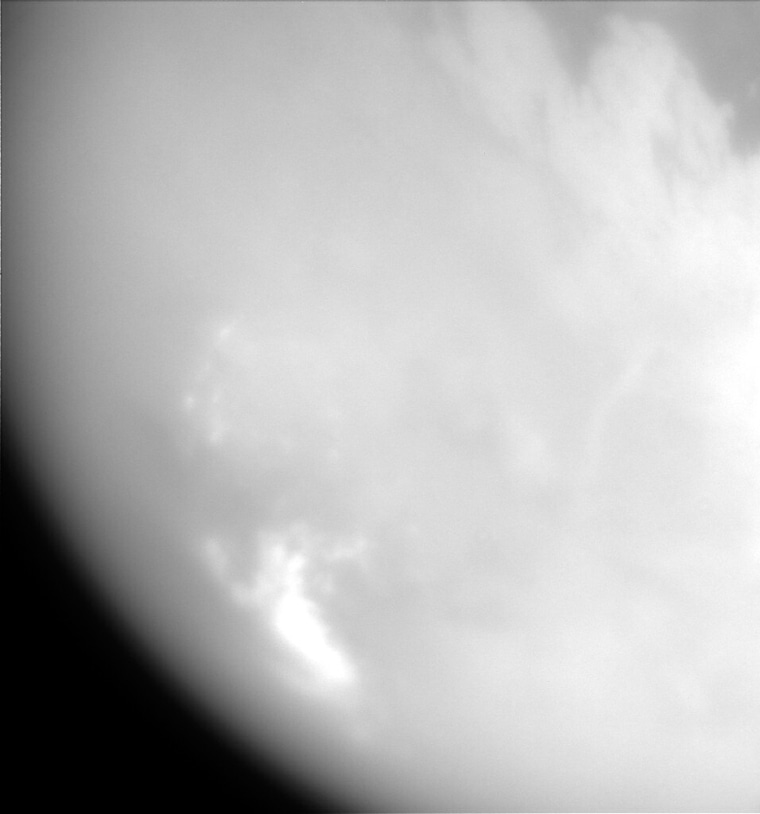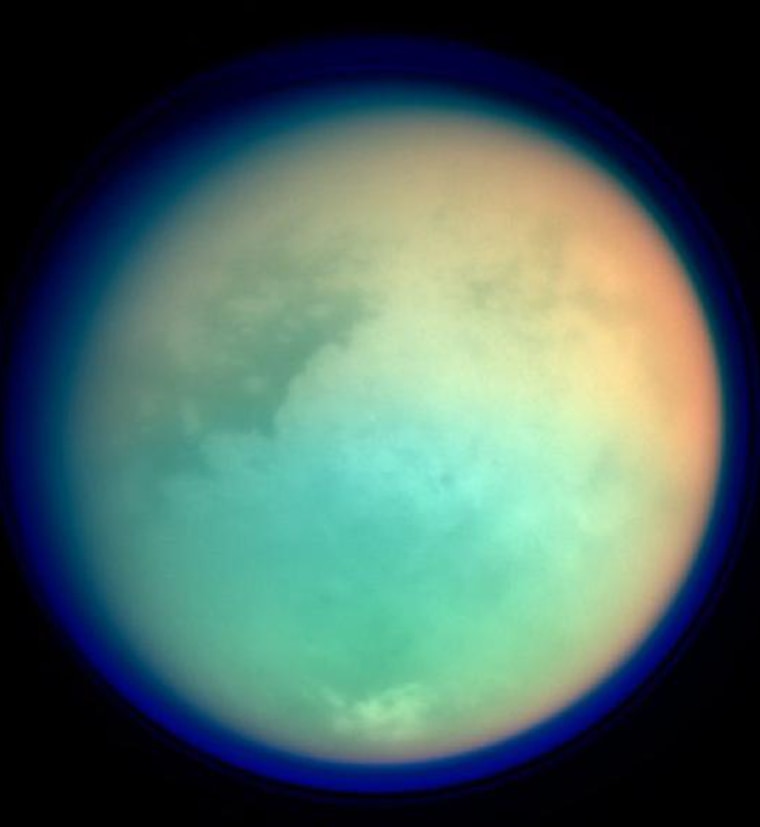The international Cassini spacecraft began unveiling Saturn’s mysterious sidekick Titan with a stream of increasingly sharp pictures of the surface taken during a flyby within 745 miles (1,200 kilometers) of the hazy moon.
Distinct dark and bright surface areas were apparent in pictures arriving at NASA’s Jet Propulsion Laboratory late Tuesday. Scientists were thrilled, but admitted they could only speculate about what they were seeing. They could not say whether there is any liquid on the surface or whether the moon has distinct topography or is flat.
“We are still mystified, and we are not quite sure what we are looking at,” imaging scientist Carolyn Porco told a news conference Wednesday.
The images and instrument data were nonetheless the best look at Titan yet. Cassini’s previous flyby was at a distance of more than 200,000 miles (320,000 kilometers).
Lakes of methane and ethane?
Scientists hoped the pictures and instrument data would show whether Titan's hydrocarbon haze has been concealing oceans or lakes of methane and ethane, which theories say could rain out of its skies.
Mission officials also hoped instruments would reveal new details of its atmospheric density, which would be useful when Cassini launches the European Space Agency’s Huygens probe for a descent to Titan’s surface in January.

The spacecraft made its closest approach to Titan at 9:45 a.m. PT (12:45 p.m. ET) Tuesday and began transmitting pictures back to Earth about nine hours later.
“It’s going to be a night of surprises,” JPL director Charles Elachi predicted at the outset. As leader of the Cassini imaging team, he said he hoped to see features that would indicate drainage as well as geysers.
Pictures were to be followed by radar data, which can be processed to show highly detailed surface images resembling black-and-white photographs. Radar imaging findings were expected to be released Thursday.
Initial fuzzy pictures were from thousands of miles away, but the images improved as Cassini hurtled closer and closer to Titan, the only moon in the solar system known to have an atmosphere.
Puzzles persist
Titan, however, seemed to be only more puzzling. Scientists peering at newly arrived images could not say, for example, whether there was liquid on the surface or whether some of the bright areas were methane clouds in the atmosphere.
Unlike many other bodies in the solar system, Titan did not show any initial evidence of clearly circular features that might be impact craters, such as those that can be easily seen on Earth’s moon, Porco said.

“It could be that if there were impact structures they might have been buried in the material that is falling out of the atmosphere and coating the surface,” she said.
The $3.3 billion spacecraft’s first flyby of Titan on July 2 proved disappointing.
Scientists struggled to discern surface features through what was described as an “organic goo,” a hydrocarbon haze likened to smog over Los Angeles.
This time, Cassini was programmed to also use its imaging radar to generate topographical maps and determine whether Titan has a liquid or solid surface.
Cassini was launched in 1997 and flew 2.2 billion miles on a roundabout route to Saturn. NASA said it has worked flawlessly since soaring through a gap in Saturn’s shimmering rings to enter orbit.
The mission was funded by NASA, the European Space Agency and the Italian Space Agency.
